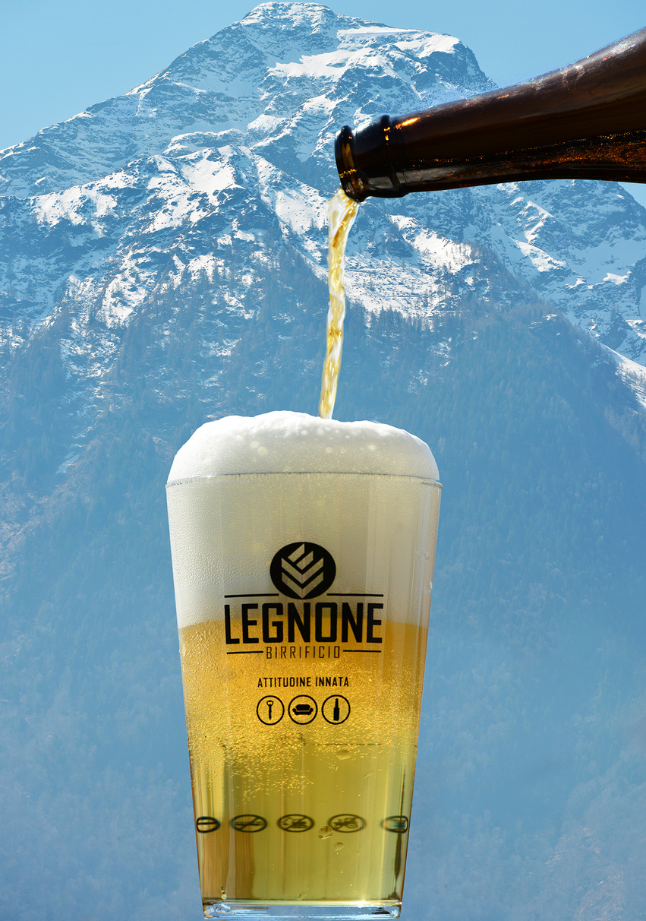x Le Mondial de la Bière June 20–22 in Montréal
How Italy’s economic powerhouse discovered the art of brewing
In the shadow of Lombardy’s industrial smokestacks and gleaming corporate towers, something unexpectedly artisanal is fermenting. This is Italy’s economic engine, the region that generates over 20% of the nation’s GDP, where efficiency and productivity reign supreme. Yet scattered across its urban landscapes and pastoral outskirts, a quiet revolution is transforming abandoned warehouses into breweries and converting Milan’s aperitivo culture into something altogether more hopeful.
The irony isn’t lost on locals: in a region synonymous with global fashion houses and multinational corporations, some of the most authentic experiences now happen in converted industrial spaces where young brewers craft small-batch ales with the same precision their neighbors apply to luxury goods.
The Pioneers of Lambrate
The story begins in 1996 in Milan’s gritty Lambrate district, where Birrificio Lambrate emerged as a pioneering craft brewery with a rough and ready brewpub near Lambrate station. The space itself tells the story: resembling an English pub crossed with a pirate ship, it occupies the kind of industrial space that once housed textile machinery or metalworking operations.
Twenty-eight years later, Lambrate remains one of the first places to enhance the spreading of the phenomenon of craft beer on the territory of Milan, producing up to 4000 liters of non-pasteurized and non-filtered beer. Each month brings new experimental brews alongside established favorites, maintaining the innovative spirit that launched Milan’s craft movement.
What makes Lambrate significant isn’t just its longevity, but its location. This wasn’t craft brewing emerging in picturesque countryside—this was urban brewing, industrial brewing, brewing that acknowledged Milan’s working character rather than retreating from it.
Beyond Milan: The Regional Awakening
But Lombardy’s brewing renaissance extends far beyond Milan’s metropolitan borders. In Bergamo, brewers skillfully experiment with hop varieties, specialty malts and local ingredients, such as honey, chestnuts and berries, to create unique beers, often inspired by the area’s agricultural and mountain traditions. This is craft brewing that speaks to terroir—from robust Belgian styles to sour beers to more modern IPAs, each reflecting the Alpine foothills’ particular character.
Bergamo’s Otus brewery exemplifies this approach, offering beers including Blanche, Pacific Ipa, Oatmeal Stoute, Strong Ale, Light Lager and Helles. The range suggests brewers comfortable moving between traditions—Belgian wit beers, American IPAs, British stouts, German lagers—unified by local ingredients and sensibilities.
The distribution network reveals the scene’s maturation. Otus beers are distributed through the Ho.Re.Ca channel (Hotels, restaurants, coffee shops, pubs, etc.), indicating craft beer’s integration into Lombardy’s sophisticated dining culture.
The Urban Drinking Circuit
In Milan proper, the craft beer infrastructure has evolved far beyond pioneering brewpubs. Bierfabrik Milano offers a good selection of top breweries from around Europe (including Italian beers, of course), representing the kind of curatorial approach that transforms drinking from consumption to education.
This isn’t the beer tourism of Bavaria or Belgium, but something more integrated into daily urban life. Lombardy’s craft beer scene feels distinctly metropolitan—places where business lunches happen over carefully selected pints, where fashion industry professionals unwind with locally brewed IPAs, where the aperitivo tradition expands to include hop-forward ales alongside traditional Aperol spritzes.

A Different Kind of Italian Excellence
What emerges in Lombardy is craft brewing as industrial design problem-solving rather than romantic artisanship. These brewers approach their craft with the same systematic thinking that built the region’s manufacturing prowess. The results taste neither rustic nor precious, but precisely calibrated for contemporary Italian palates that appreciate complexity without ostentation.
Birrificio Italiano, the first brewpub in Lombardy, has been brewing unfiltered, unpasteurized, additive-free craft beer since 1996. The longevity suggests something more substantial than trend—a genuine cultural shift that has sustained itself across economic cycles and changing tastes.
The Sophisticated Traveler’s Discovery
For visitors accustomed to Lombardy’s established attractions—La Scala, the Duomo, Lake Como’s villas—the region’s brewing scene offers a different kind of authenticity. This is contemporary Italian culture in formation, where tradition meets innovation in ways that feel genuine rather than performed.
The breweries themselves occupy fascinating spaces: former factories, converted warehouses, neighborhood spots that feel more like local hangouts than destinations. They’re places where you might overhear conversations in three languages, where design industry insiders debate hop varieties with the same intensity they apply to color palettes.
Whether you choose the city, the plain, the mountain or the lake, there will always be a brewery or a pub ready to offer you one of their delicious craft beers. This geographic diversity means craft beer experiences that range from urban industrial to Alpine traditional, all within a region smaller than many individual American states.
The Quiet Revolution Continues
What makes Lombardy’s craft beer scene compelling isn’t its dramatic origin story or charismatic personalities, but its integration into the region’s broader cultural evolution. This is craft brewing as part of a larger movement toward quality, authenticity, and local production that coexists comfortably with global commerce and industrial efficiency.
In a region where “Made in Italy” carries premium weight in fashion and design, craft brewers are extending that same attention to quality and detail into fermentation. The results suggest not a rejection of Lombardy’s industrial character, but an evolution of it—precision and efficiency applied to artisanal production, urban sophistication expressed through carefully crafted ales.
For the discerning traveler, Lombardy offers the rare opportunity to witness Italian excellence in formation—not the preservation of ancient traditions, but the creation of new ones, one perfectly balanced pint at a time.
x Le Mondial de la Bière June 20–22 in Montréal
